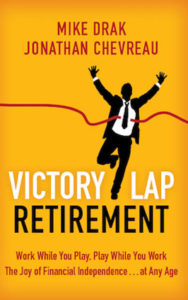Wouldn’t it be nice for our retirement planning purposes if stocks consistently gave us eight to 10 per cent returns each year? After all, that’s what stock markets have delivered on average over the very long term.
Indeed, between 1935 and 2016 U.S. stocks returned 11.4 per cent annually, Canadian stocks returned 9.6 per cent annually, and international stocks averaged annual returns of 8.3 per cent.
I have an eight per cent target in mind when projecting investment returns for my own retirement plan.
The trouble is that stock returns are anything but predictable and so while they may average eight to 10 per cent over a 25-or-50-year period, each single year could deliver panic inducing losses, euphoric gains, or something in-between.
Since 1988, the S&P 500 had single-year returns as low as negative 37 per cent (2008) and also gained as much as 37.58 per cent in a single year (1995). Only in three of those 29 years did the S&P 500 deliver annual returns between eight and 11 per cent. The rest of the years are all over the place.
Why does this matter to your retirement planning? Because it’s not enough to just plug “eight per cent” into your retirement projections and call it a day.
What happens if stocks plunge by 35 or 40 per cent in year one of retirement, as they did to those unlucky enough to retire in 2008?
Enter the Monte Carlo Simulation
A Monte Carlo Simulation can reveal a wide variety of potential outcomes by taking into account fluctuating market returns. So instead of basing your retirement calculations on just one average rate of return, a Monte Carlo Simulation might generate 5,000 scenarios of what hypothetically might happen to your portfolio as you draw it down and markets fluctuate.
Let’s look at an example of a 60-year-old who retires with $750,000 invested in a standard balanced portfolio of 60 per cent stocks and 40 per cent bonds. This retiree wants to know how much is safe to withdraw from the portfolio each year and whether it can last 30, 40, or even 50 years.
We can do this with a Monte Carlo Simulation. I used Vanguard’s retirement nest egg calculator. We’ll start with a safe withdrawal rate of 4 per cent per year:
- How many years should the portfolio last: 30 years
- What is your portfolio balance today: $750,000
- How much do you spend from the portfolio each year: $30,000
The results: There’s a 93 per cent probability that this portfolio lasts 30 years.
When I re-run the simulation using a withdrawal rate of 5.3 per cent (spending $40,000 per year) there’s now just a 74 per cent chance the portfolio survives 30 years.
What happens if our retiree lives until 100? We’ll need to make the portfolio last for 40 years instead of 30.
Spending $40,000 each year means the portfolio has only a 62 per cent chance of surviving 40 years. If we go back to our original 4 per cent safe withdrawal rate ($30,000 per year) then our portfolio jumps back up to an 87 per cent survival rate.
In one interesting simulation, I increased the stock allocation to 100 per cent and changed the annual spending to $50,000 (or 6.7 per cent of the portfolio). The $750,000 portfolio has a 50 per cent chance of lasting 40 years. Not something I’d chance to a coin-flip!
How does a Monte Carlo Simulation work? According to Vanguard, they randomly select the returns from one year of the database for each year of each simulation.
Using those values, they calculate what would happen to your portfolio – subtracting your spending, adjusting for inflation, and adding your investment return.
This process is repeated one year at a time until the end of your retirement or until your portfolio runs out of money. After 5,000 independent simulations there’s a broad range of possible scenarios and clear patterns begin to emerge.
Final thoughts
For those of you close to retirement or that have recently retired, I strongly encourage you to speak with your financial advisor about running a Monte Carlo Simulation for your own portfolio using several different inputs that match your goals and projections. DIY investors can find calculators such as Vanguard’s online to run their own simulations.
Err on the side of caution so that you’re comfortable with the outcomes. If there’s only a 50 per cent chance that your portfolio lasts the length of your retirement, that’s not a plan, it’s a gamble.
 In addition to running the Boomer & Echo website, Robb Engen is a fee-only financial planner. This article originally ran on his site on January 2nd and is republished here with his permission.
In addition to running the Boomer & Echo website, Robb Engen is a fee-only financial planner. This article originally ran on his site on January 2nd and is republished here with his permission.








